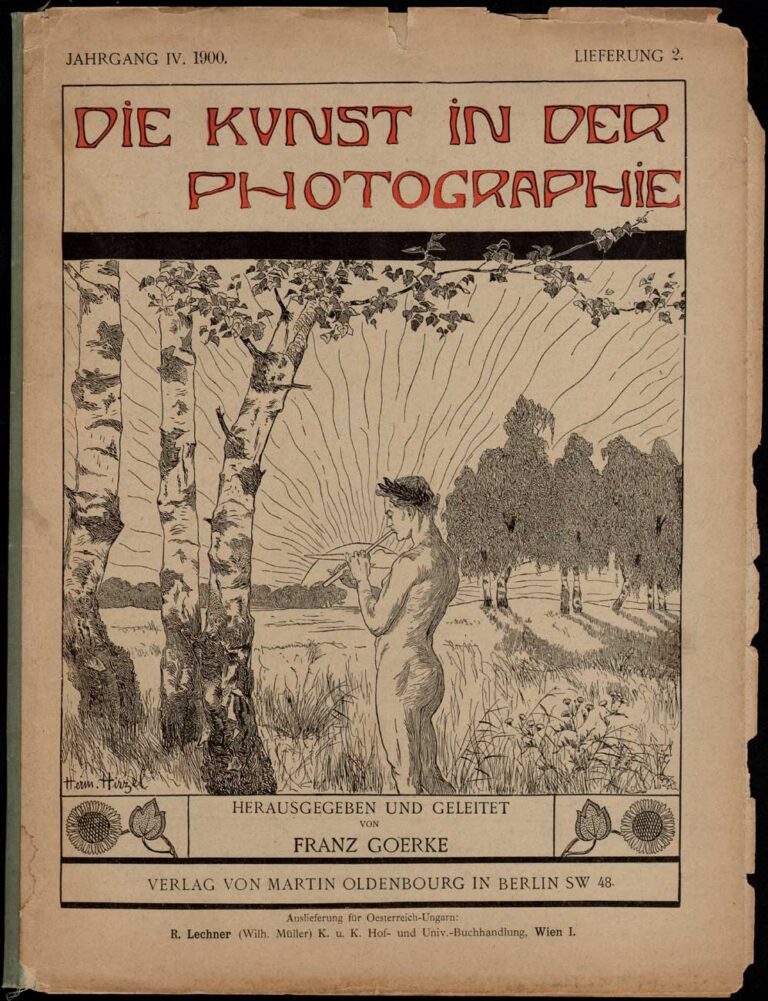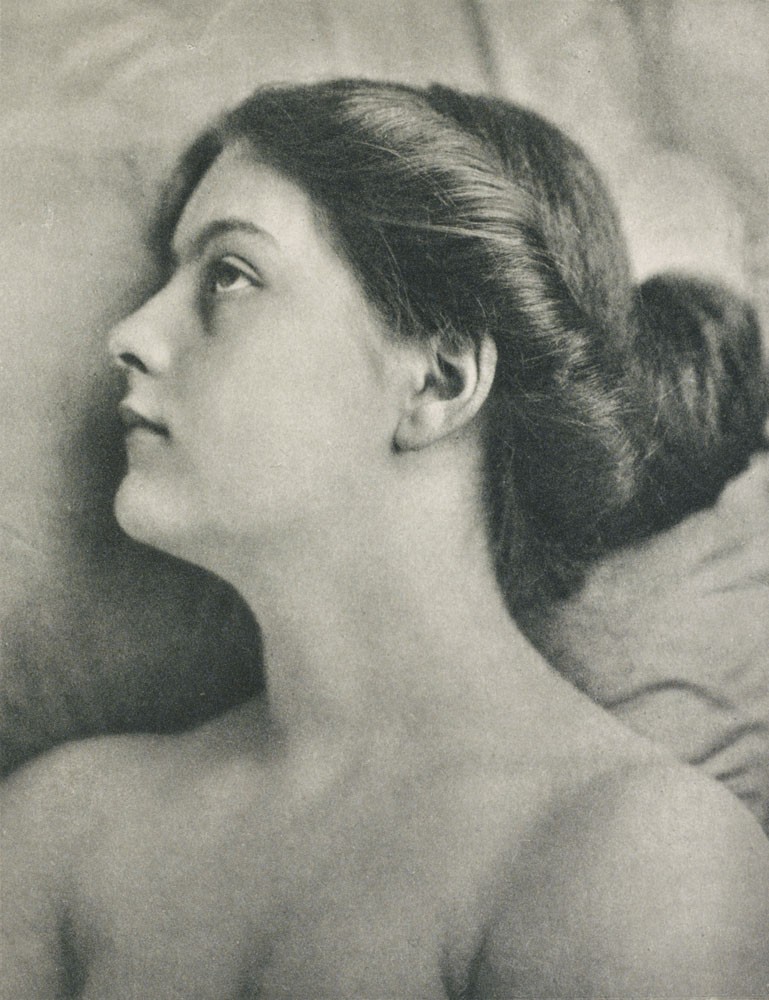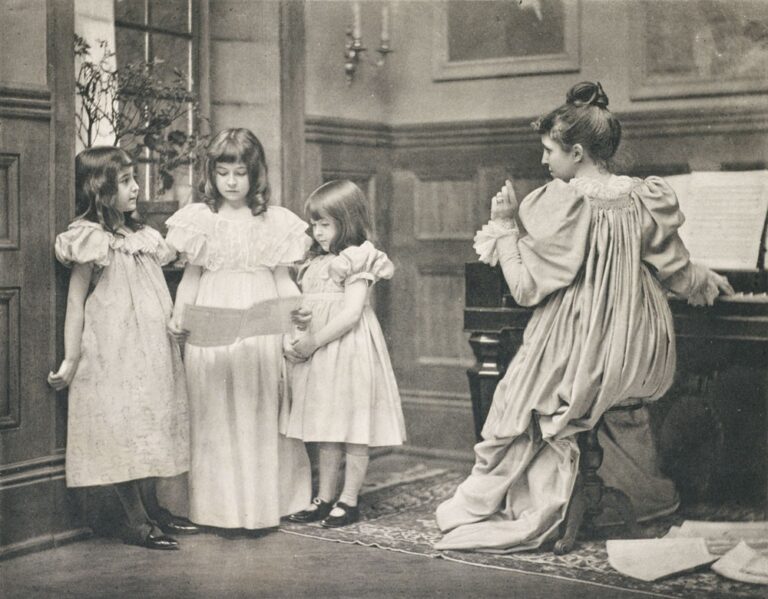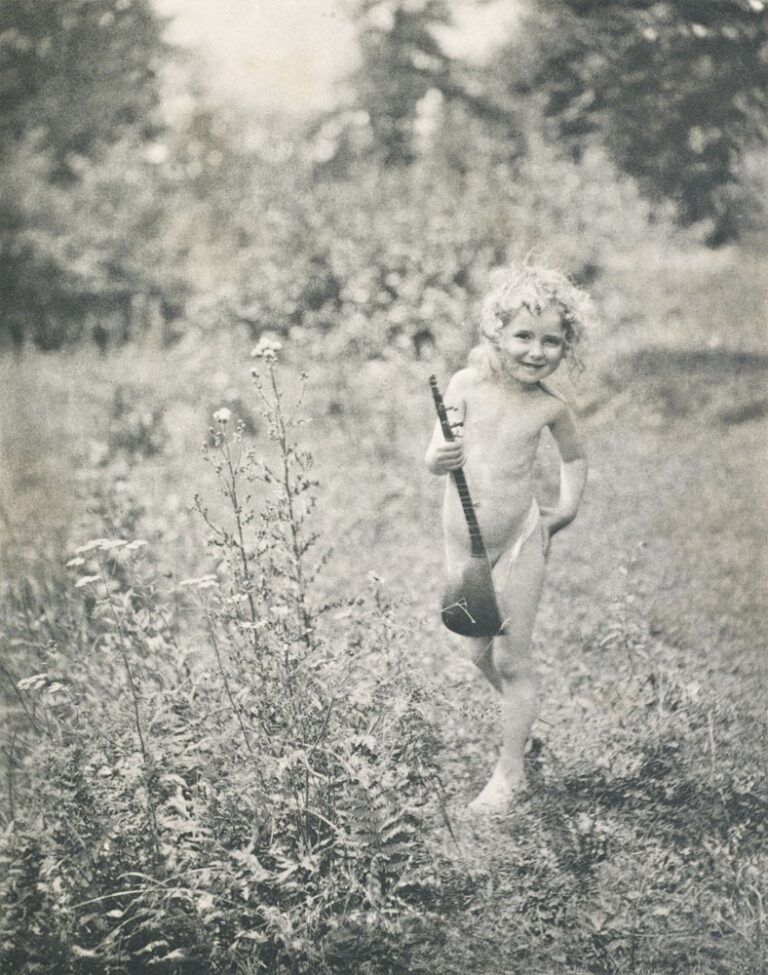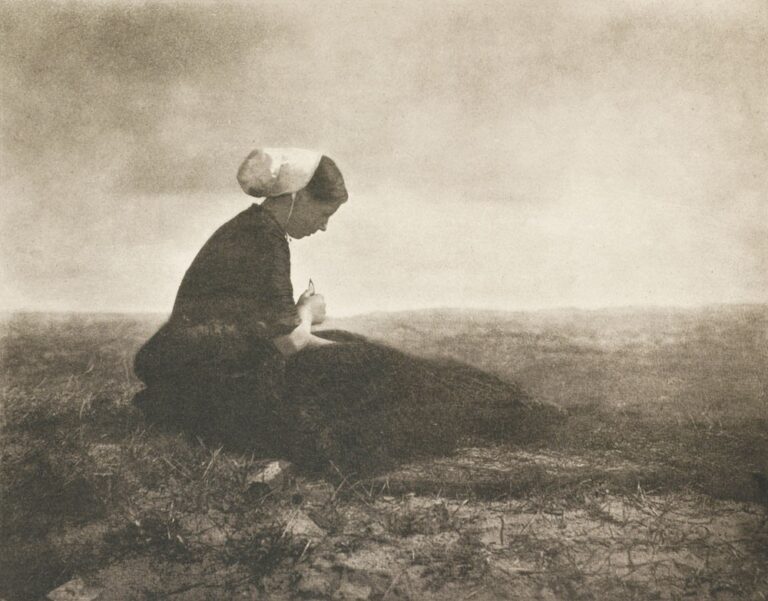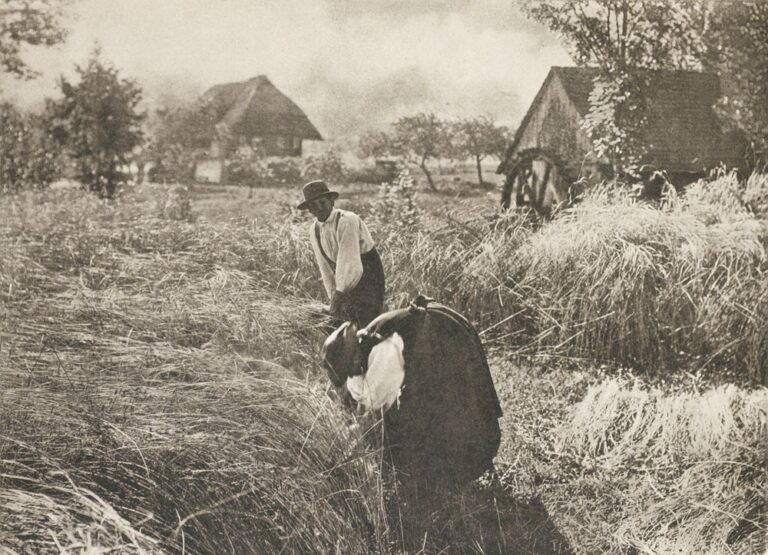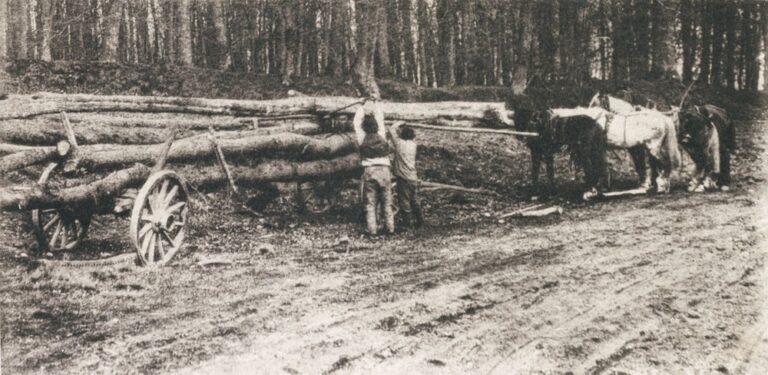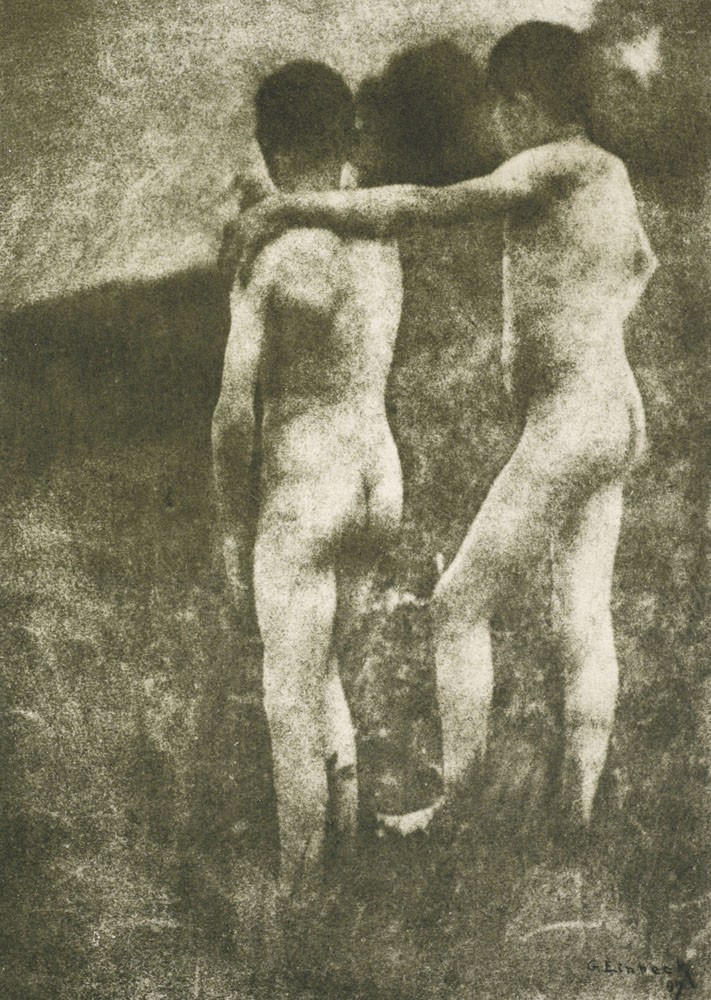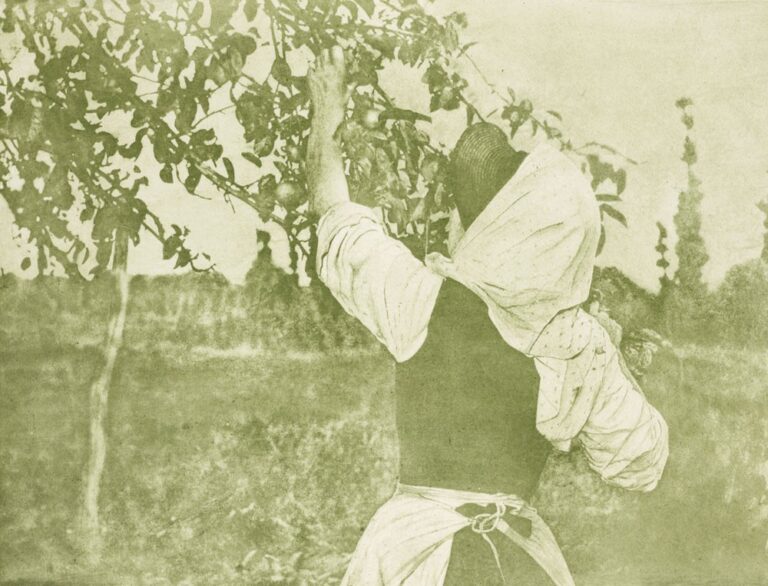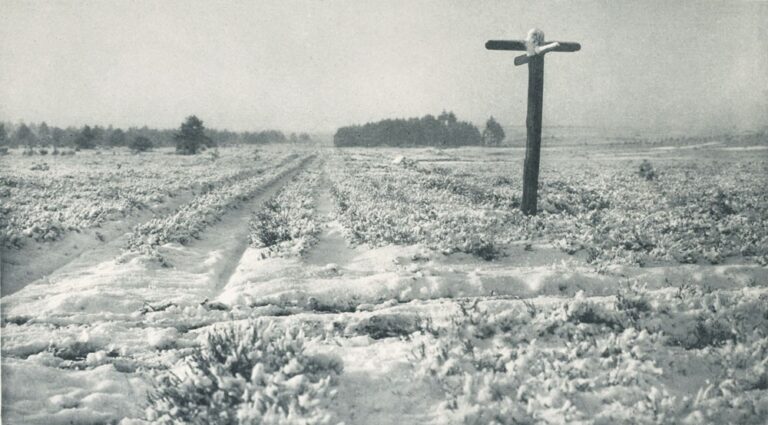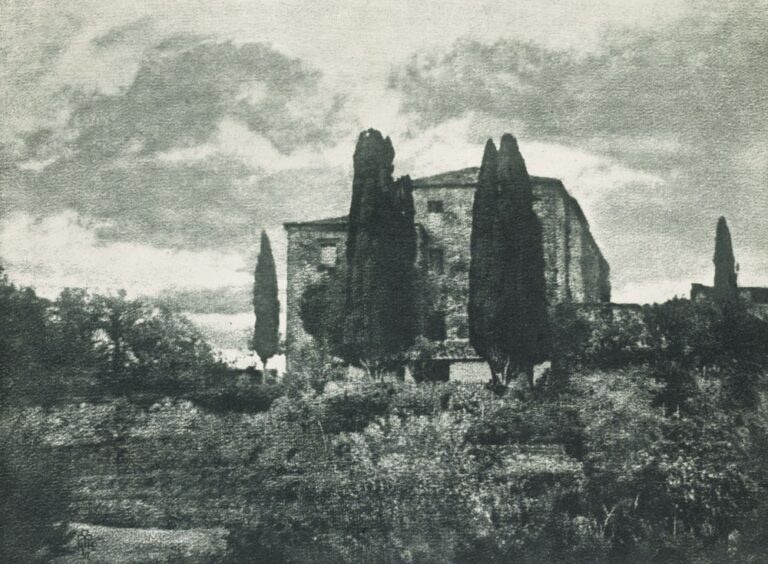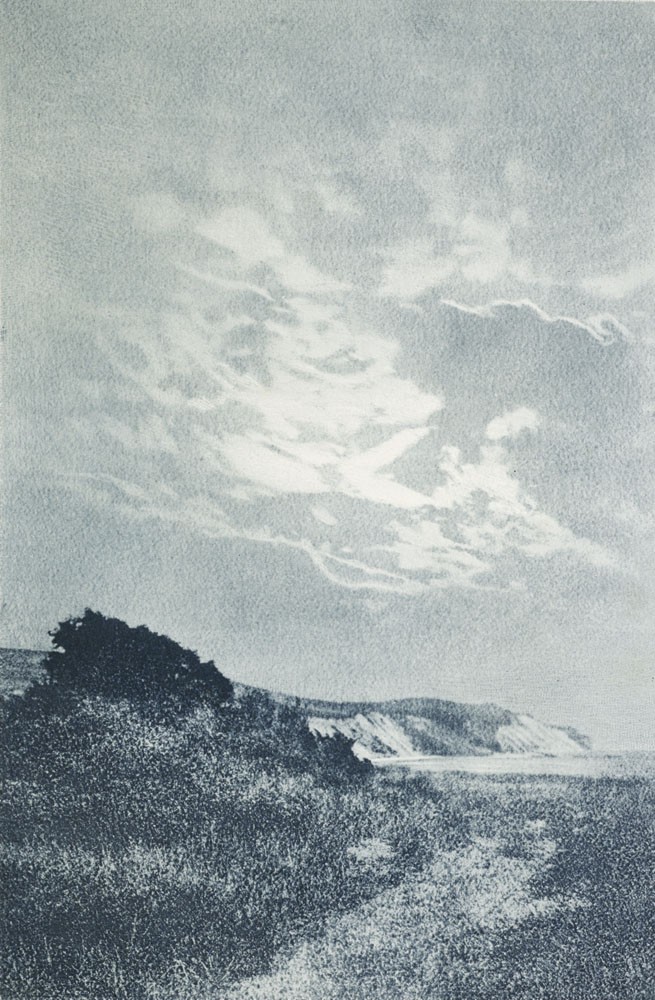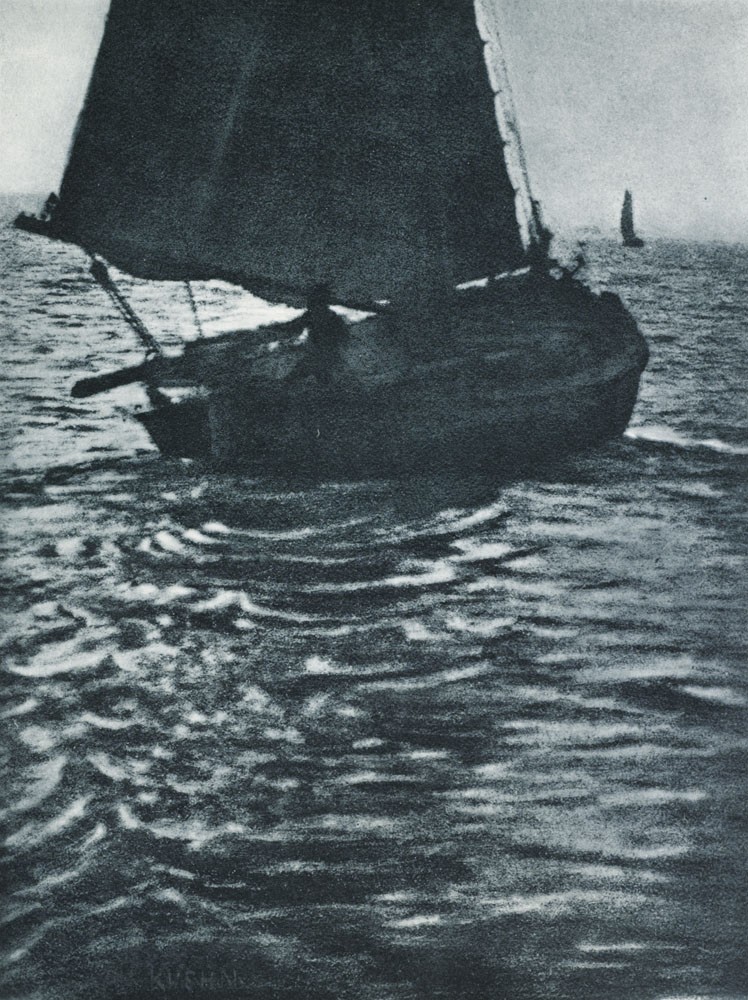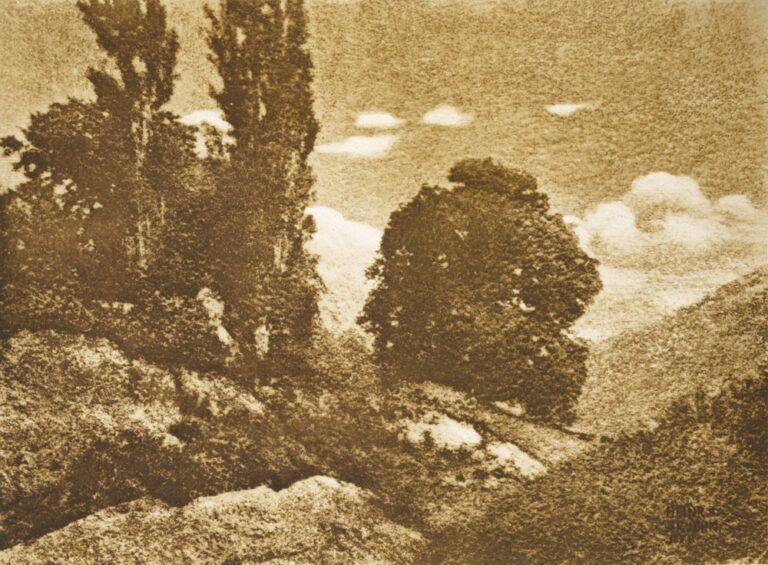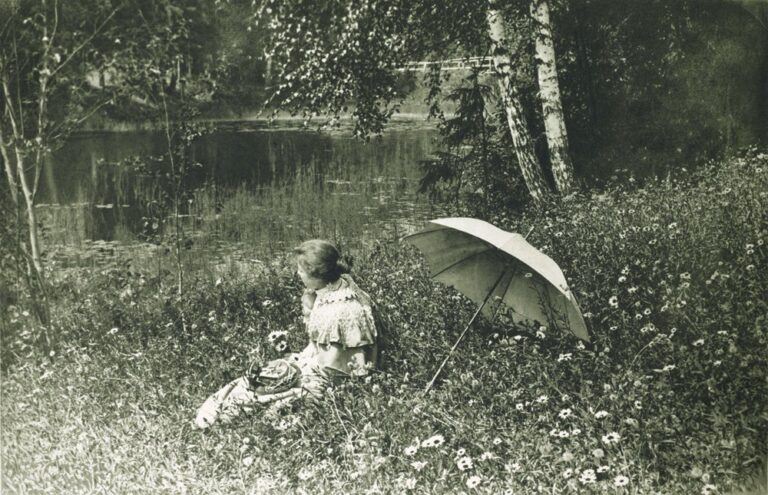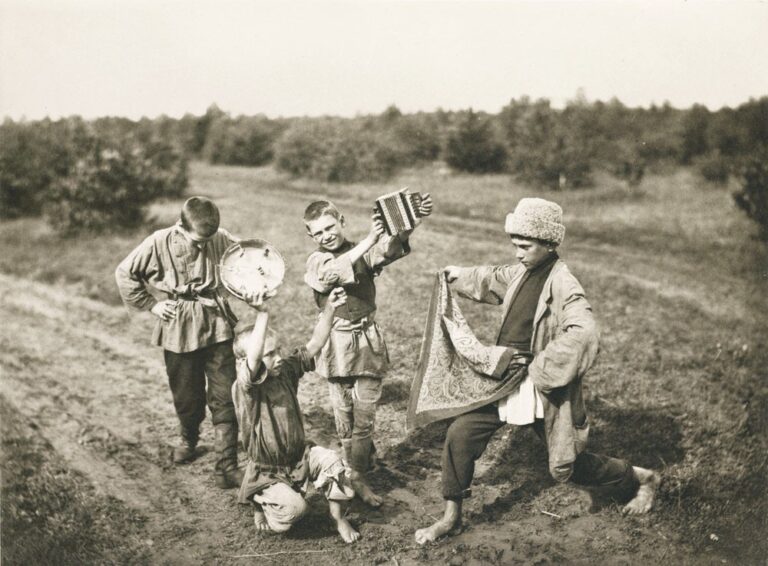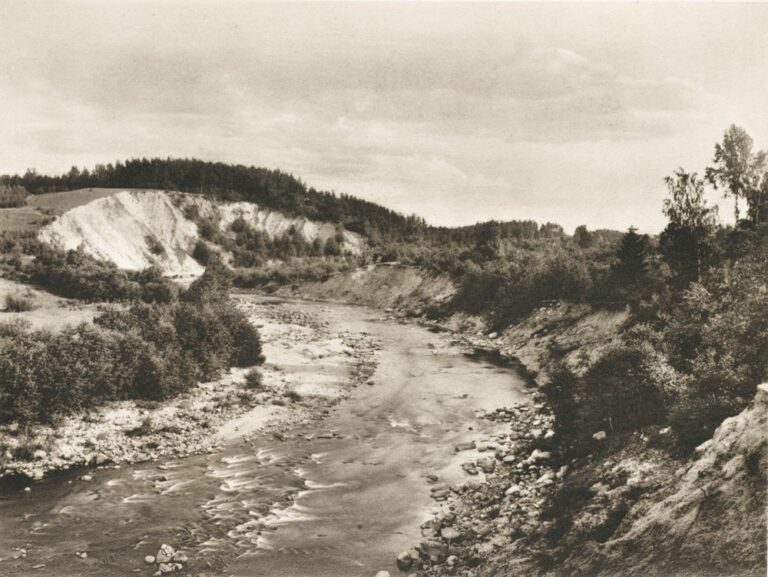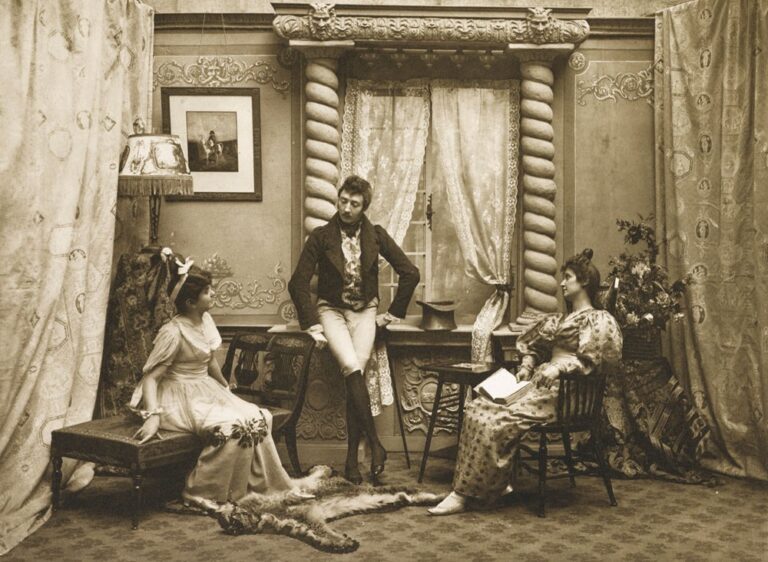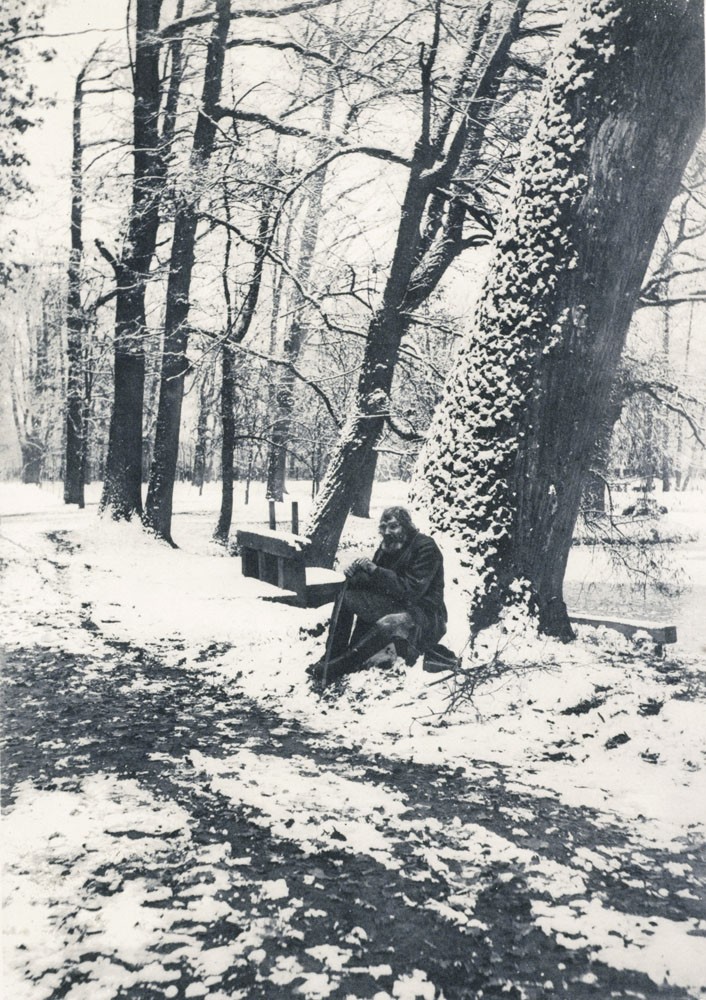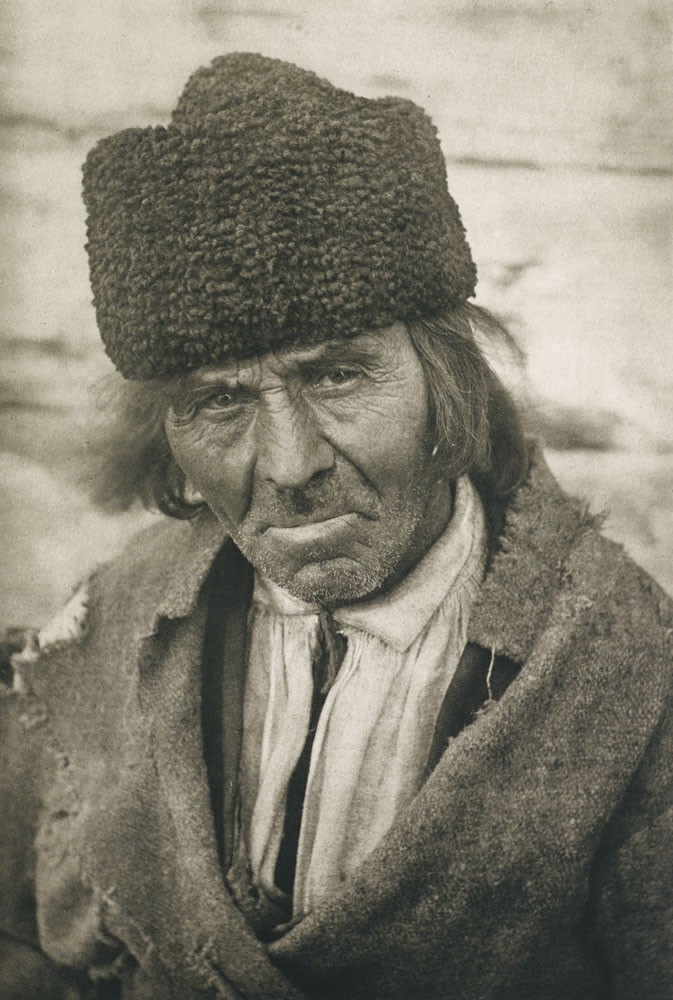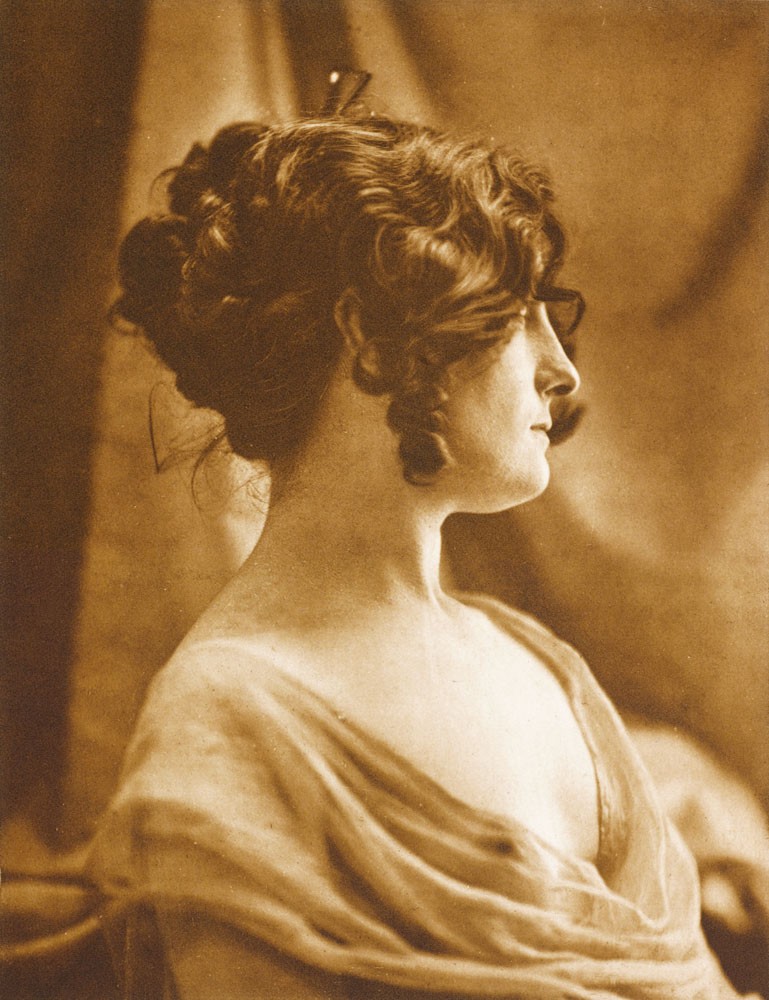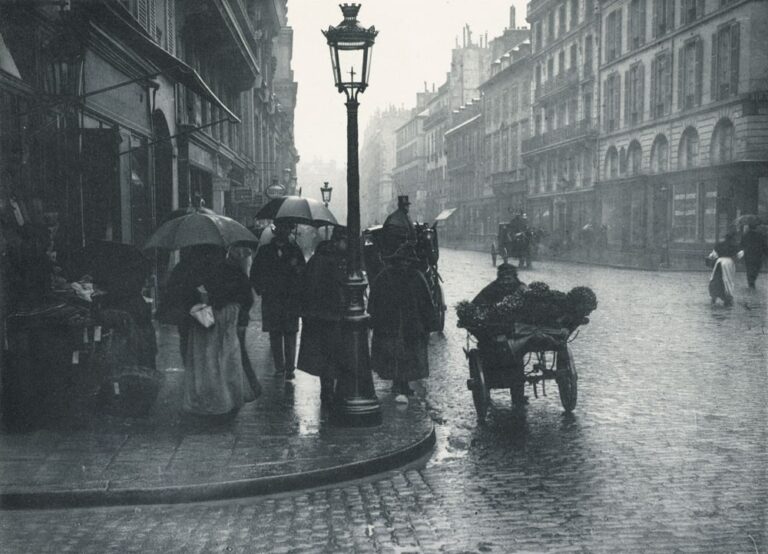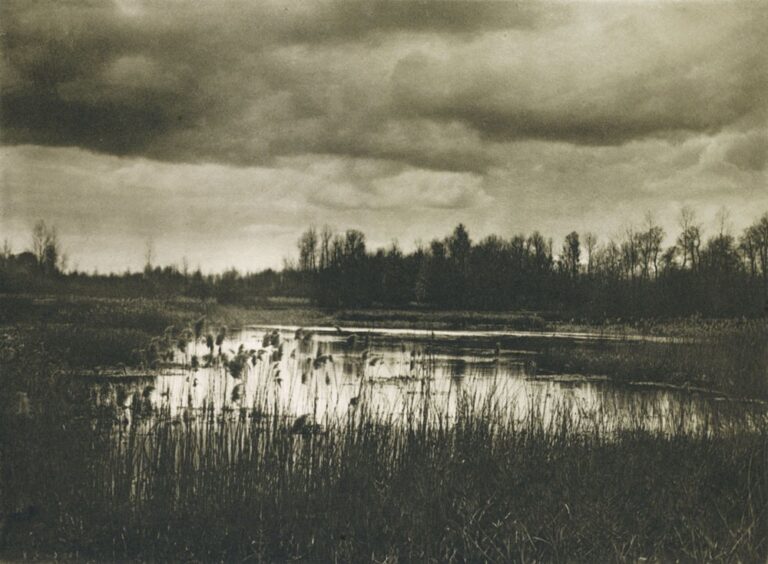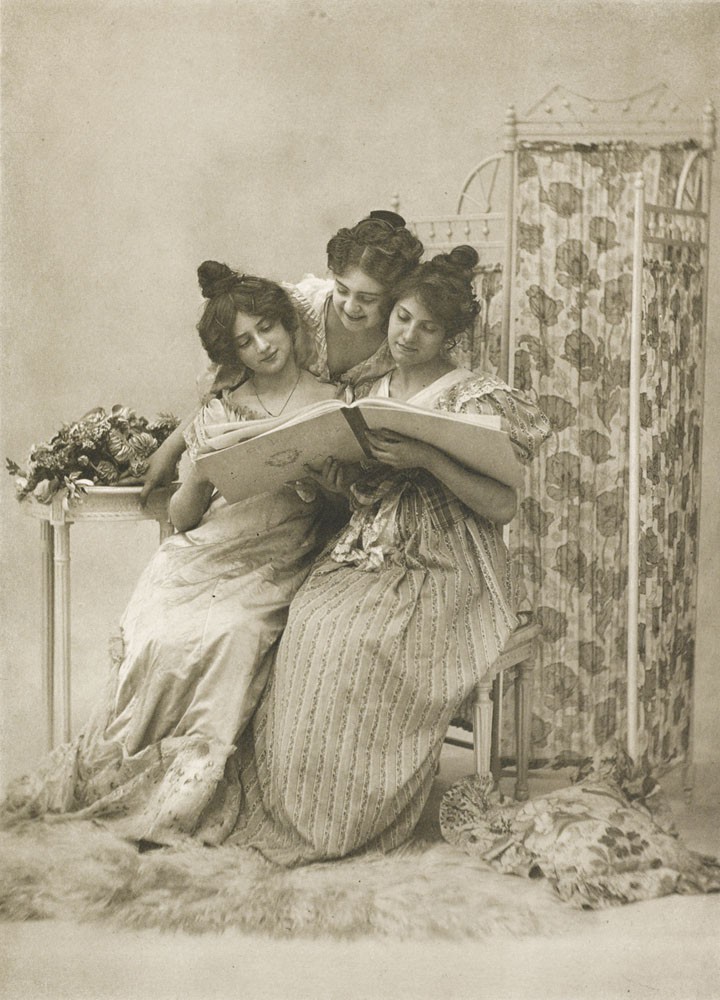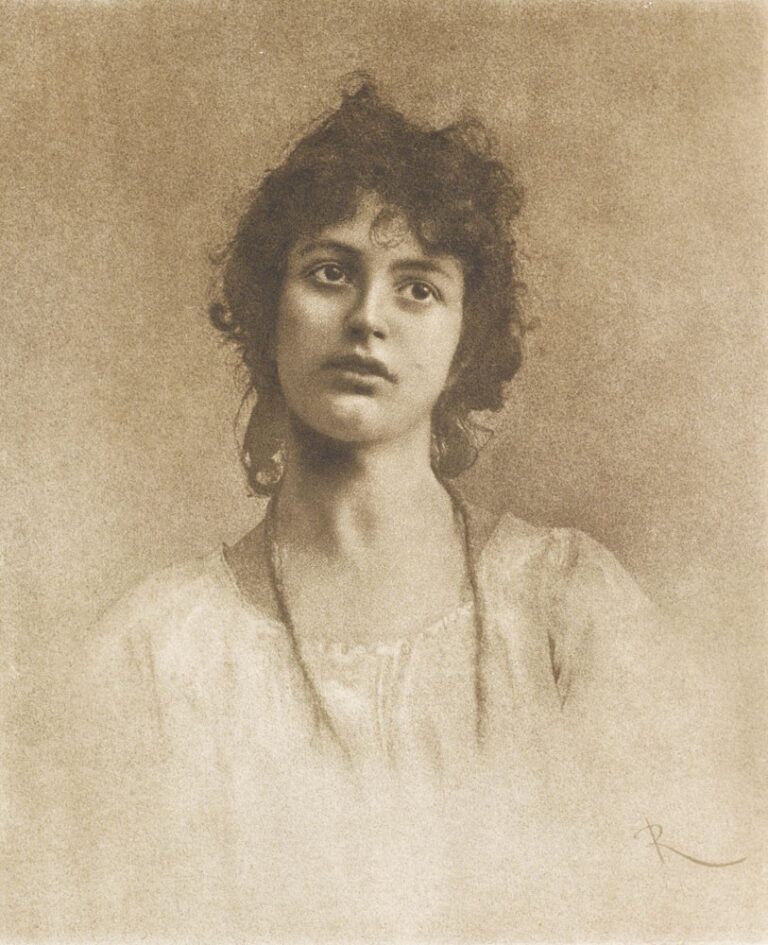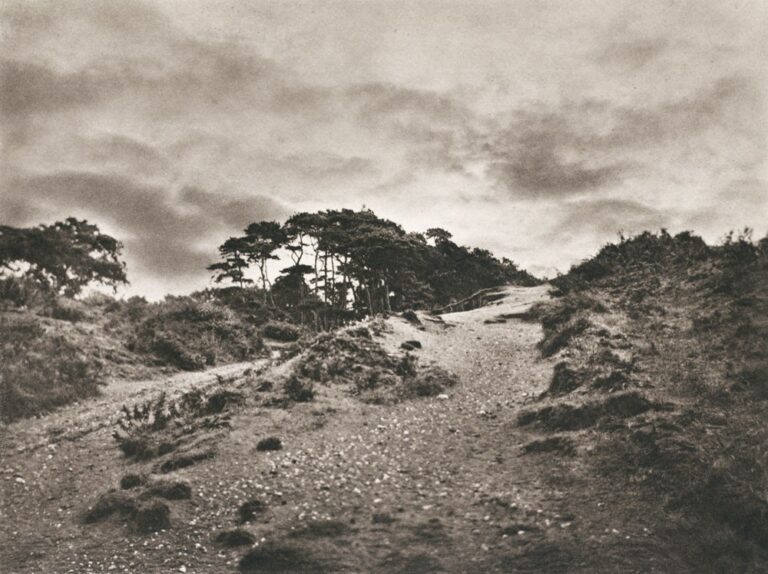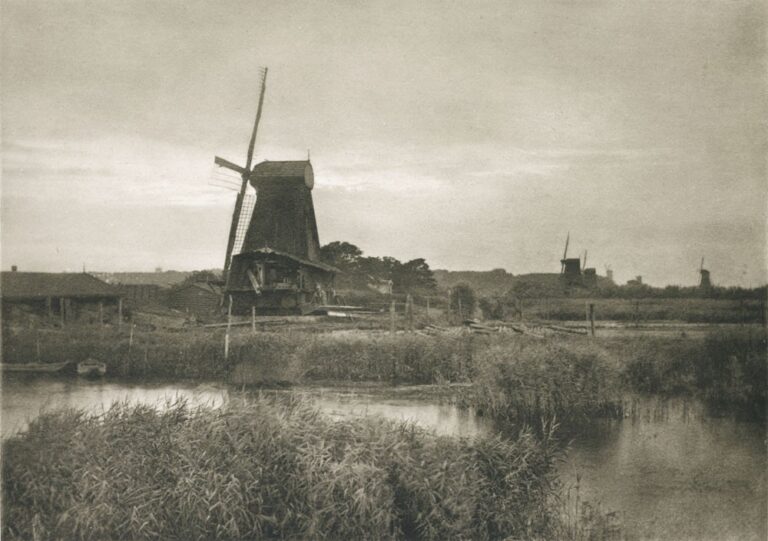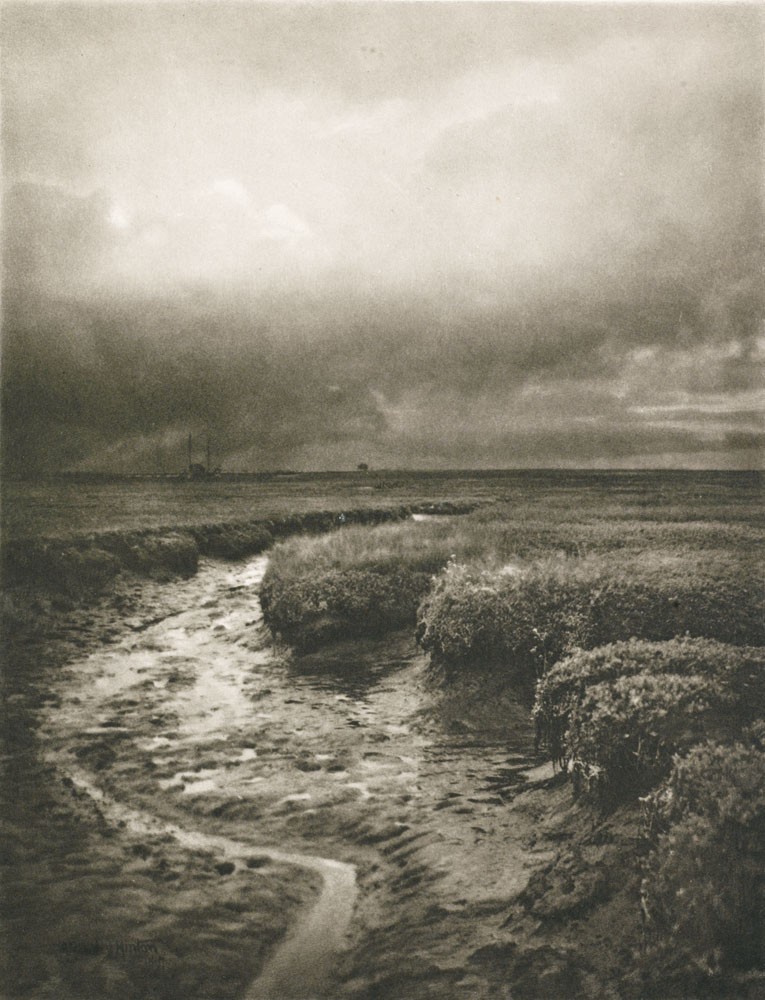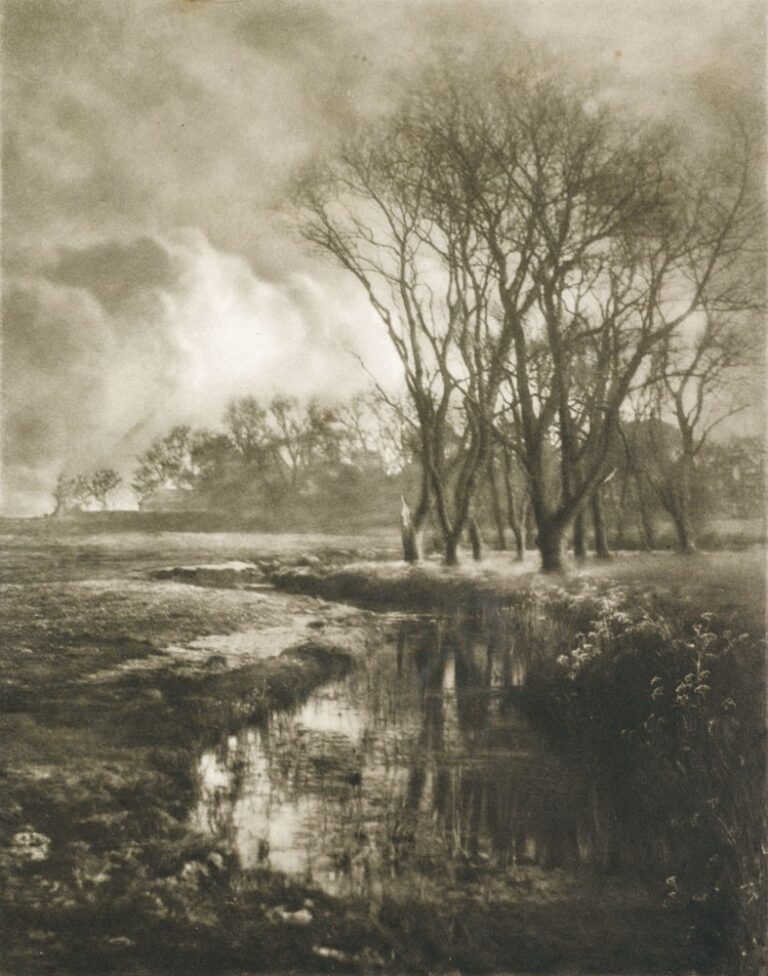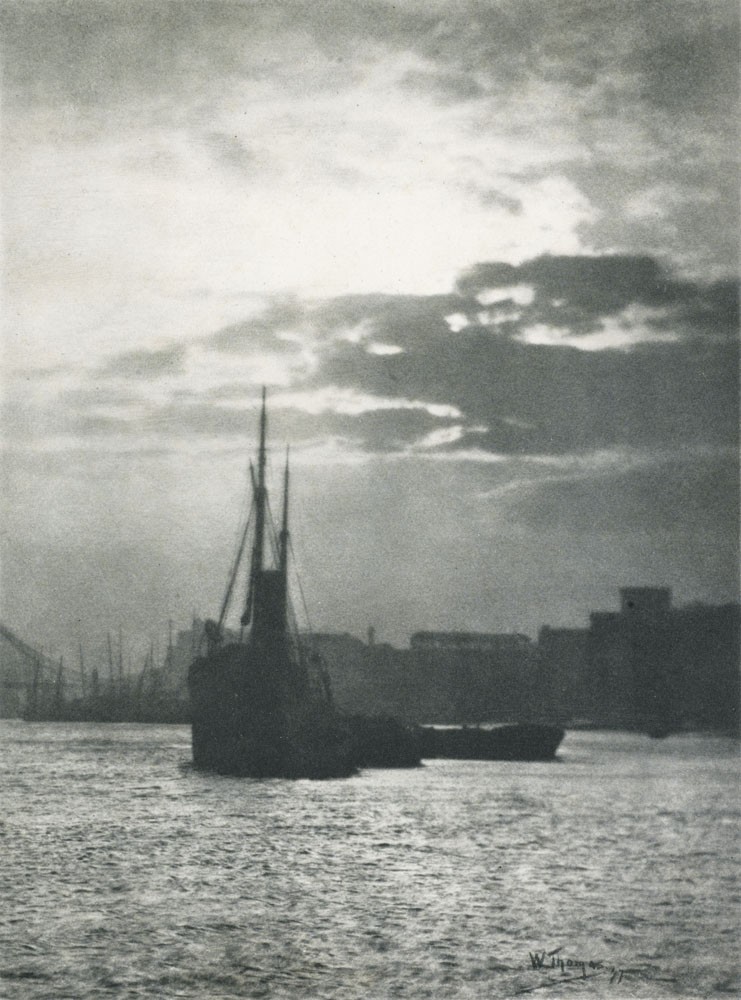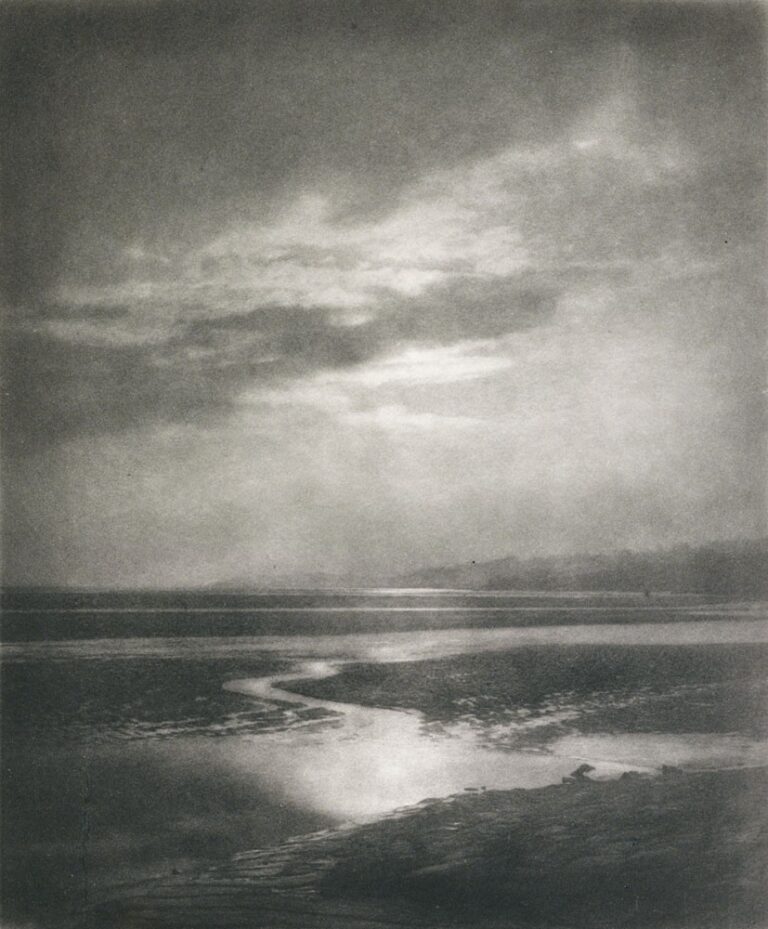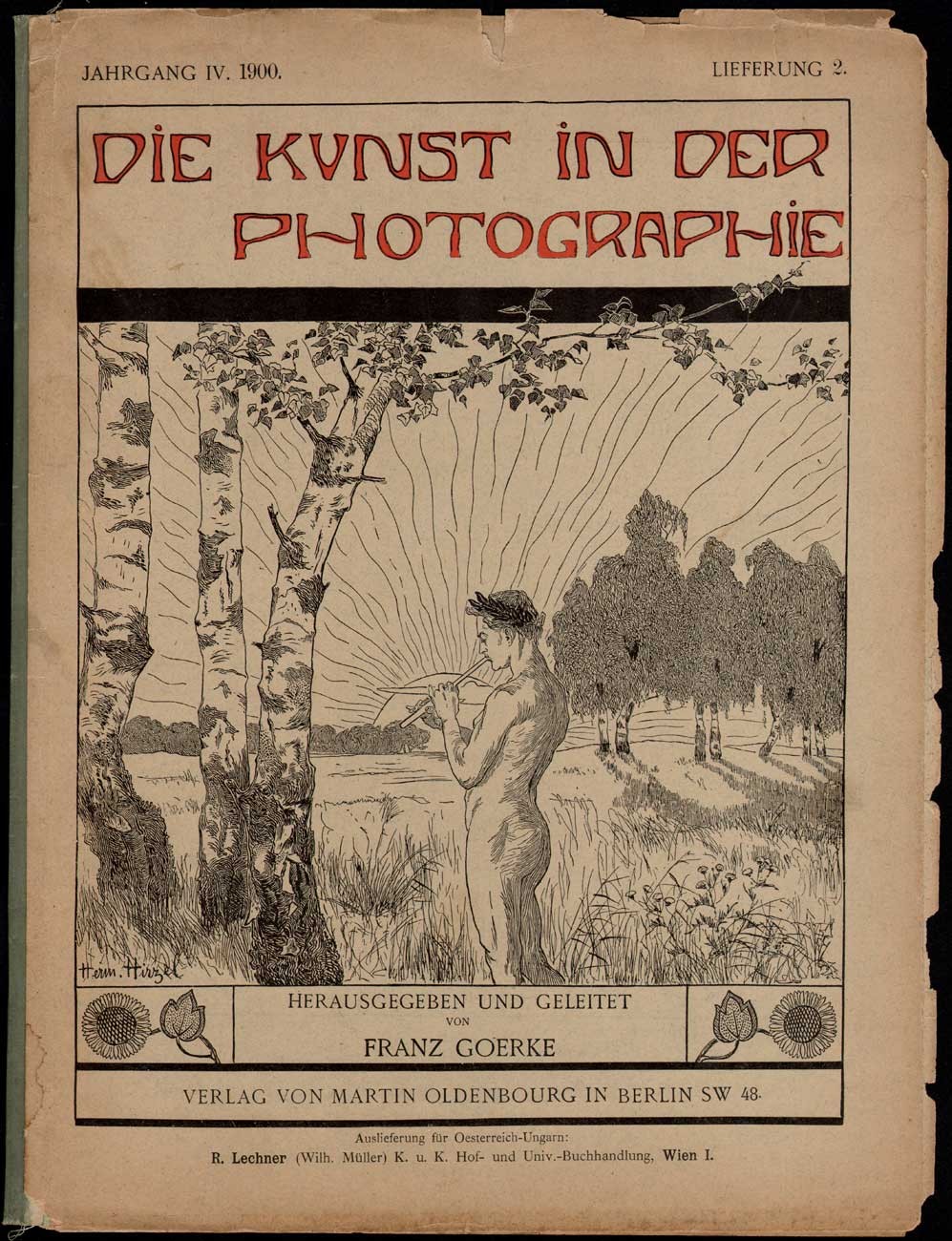
Die Kunst in der Photographie : 1898
Introduction: Die Kunst in der Photographie : 1898
The second year 1898 of Die Kunst in der Photographie featured 36 photogravures (issued loose with letterpress) contained in six art folios. The themes of the individual issues are as follows:
1. Die Photographie in Amerika
2. Die Gesellschaft zur Förderung der Amateur-Photographie in Hamburg
3. Das Trifolium des Wiener Camera-Clubs
4. Russland und Polen
5. Der Salon des Photo-Club Paris, 1898
6. Die englische Landschafts-Photographie
The full year of the publication (Zweiter Jahrgang: 1898) included letterpress issued covering 48 pages with the addition of 30 halftone photographs. Text articles by page # and author attribution for the year are as follows:
1. Richard Stettiner: Einleitung. (Introduction)
5. F.G. u. R. St.: (Franz Goerke and Richard Stettiner) Die Photographie in Amerika.
9. Alfred Lichtward: Die Amaterurphotographie in Hamburg.
17. Alfred Buschbeck: Das Trifolium des Wiener Camera-Clubs.
25. F.G. (Franz Goerke): Einleitende Worte.
26. M Allihn: Das subjektive Bild.
33. Maurice Bucquet: Kunst und Photographie.
41. A. Horsley Hinton: Englische Landschafts-Photographie.
Author and collector Rolf H. Krauss presents a series of abstracts and summaries of the text articles issued with the run of this publication in the publication History of Photography. Following is his summary from the article authored by Franz Goerke & Richard Stettiner: discussing “Photography in America”, issued with art folio #1 for 1898:
“It is difficult for us in Europe to get a clear picture of what is going on in America in the field of art photography. For that reason one should judge with leniency what we are here saying about the characteristic features of the American photographs that have been compiled for this book by Alfred Stieglitz. In this country R. Eickemeyer has been known the longest. He is a representative of the old school, as opposed to the new one to which Stieglitz belongs. C. J. Berg (New York), Miss Farnsworth (Albany), E. Lee Ferguson (Washington), Miss Zaida Ben Yusuf (New York) and F. Holland Day (Boston) could be considered as one group. Their taste in photography is of a feminine kind, almost leaning towards a certain mellowness and occasionally bordering on sweetness. F. Holland Day, however, is an exception, even though he also places the naked or semi-naked human body in the centre. The sharpness and greatness of his perception is sometimes reminiscent of the Pre-Raphaelites. Alfred Stieglitz belongs unconditionally to the modern movement. Today he is probably at the top of everything that has to do with photography in America, and he is an artist in portraiture as well as in landscape photography. Even if someone’s initial reaction when looking at his pictures might be: like Liebermann, he is certainly more than just a skilled copyist. However, future developments are not likely to begin with Stieglitz. There is still no one who will achieve what is lacking today: an American school of photography.” 1.
It is evident from this translation that Alfred Stieglitz provided the five American photographs used for the letterpress and the six photographs reproduced as photogravures for the 1898 art folio. Since the article was jointly authored, it is unclear but revealing that it concludes with the fact that they did not believe Stieglitz would be at the forefront of the American school-the opposite of course which we now know to be true today. And for the record, “Stieglitz told critic Sadakichi Hartmann that when he made his photograph (Net Mender) the painter (Max) “Liebermann’s representation of Dutch fishing folk had never entered my mind.” 2.
Thirty-five of the 36 photogravures making up the 2nd year (1898) of this journal are included here. An impressive 24 of these photogravures are produced as Chine-collé photogravures. Here, the copper-plate photographic ink impression is made on a fine sheet of India or China paper embossed and or glued to another sheet of plate paper. This is perhaps the finest method of bringing out detail in the copper plates themselves.
Notes
1. Rolf H. Krauss: Die Kunst in der Photographie, the German Camera Work: Part 2: Texts in Abstract: History of Photography, Volume 11, Number 1, January-March 1987: pp. 4-8
2. “My Favorite Picture”: reprinted in: Stieglitz on Photography: His Selected Essays and Notes: compiled and annotated by Richard Whelan: bibliography of Stieglitz’s writings compiled, with a preface, by Sarah Greenough: Aperture: 2000: p. 61
